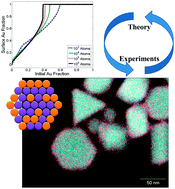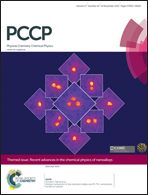Segregation in bimetallic nanoparticles
Abstract
Bimetallic nanoparticles are of interest due to their physical and chemical properties, which differ from their monometallic counterparts, and are dependent on size, composition and structure. Their unique chemical and physical properties make them useful in many optical, electronic and catalytic applications. In this perspective article we discuss segregation in bimetallic nanoparticles and highlight a recent analytical model based on minimization of energy. Computational approaches are discussed, along with a few examples and a comparison with the analytical approach. Experimental evidence for surface segregation is described, and finally, future directions are suggested. From this review of theoretical and experimental information it appears that a general consensus is starting to emerge that there are size-dependent variations in segregation in nanoparticles with the experimental data reasonably consistent with the theoretical models.

- This article is part of the themed collection: Recent advances in the chemical physics of nanoalloys

 Please wait while we load your content...
Please wait while we load your content...